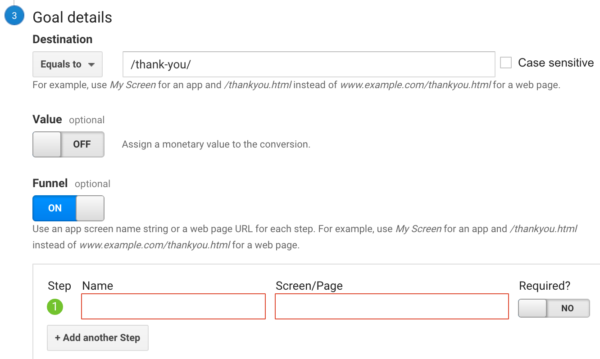What Data Is Google Analytics Goals Unable to Track: Discover the Limitations
What Data Is Google Analytics Goals Unable to Track: Discover the Limitations
Blog Article
Debunking Google Analytics Limitations: Reveal What Data Goals Can not Track
In the world of digital analytics, Google Analytics stands as a powerful device that provides important insights into site efficiency and user actions. From the ins and outs of individual communication with vibrant material to the complexities of cross-device customer journeys, these constraints shed light on locations that may remain obscured from conventional analytics viewpoints.

User Communication With Dynamic Material
Customer interaction with dynamic content plays a vital duty in understanding user actions on sites and maximizing the total customer experience. Dynamic content refers to components on a website that can change without the requirement for a full page reload. This consists of interactive components such as pop-ups, sliders, forms, and video clips that react to customer activities in real-time. By tracking individual interactions with dynamic content, web site proprietors can acquire beneficial understandings right into individual involvement, preferences, and actions.
Google Analytics provides different devices to track individual communications with vibrant material, such as occasion tracking and online pageviews. Occasion tracking allows you to check details user activities, like clicking a button or viewing a video clip, supplying data on exactly how individuals connect with dynamic elements. Virtual pageviews can be utilized to track interactions that do not result in a brand-new page tons, offering an extensive view of customer engagement with dynamic content. By evaluating this data, web site proprietors can make informed choices to enhance customer experience and drive conversions.
Cross-Device User Journeys
How can contemporary analytics devices track the facility courses individuals take across multiple gadgets in their on the internet trips? Cross-device individual trips present a considerable obstacle for monitoring and assessing individual actions properly. As customers connect with applications or sites making use of numerous devices such as smart devices, desktops, and tablet computers, it comes to be essential to understand just how they relocate between these platforms to enhance user experience efficiently.
Google Analytics faces restrictions in tracking cross-device user journeys due to privacy concerns and technical restraints - what data is google analytics goals unable to track. While it can supply insights into specific gadgets' interactions, tracking a smooth customer journey across several gadgets stays a challenge. This limitation can cause insufficient data and fragmented individual understandings, making it difficult for businesses to produce a unified sight of the client journey
To address this concern, businesses can use advanced analytics tools that use cross-device tracking capacities, permitting them to get an extra all natural understanding of customer habits. By leveraging these tools, businesses can connect the void in tracking cross-device customer journeys and optimize their electronic techniques for a seamless customer experience.
Offline Conversions and Attribution
As businesses navigate the obstacles of tracking cross-device individual trips, another pivotal element to think about is the realm of offline conversions and acknowledgment in the world of data analytics. While Google Analytics provides useful insights right into online user actions, it falls short when it pertains to tracking conversions that occur offline. This limitation postures a significant challenge for companies that have both online and offline sales networks.
Offline conversions, such as purchases made in physical shops or through phone call facilities, are vital to recognizing the total client trip. Without the capacity to connect these offline conversions to certain online communications, services might struggle to accurately measure the effect of their digital marketing efforts.
To resolve this void, services can explore alternate solutions such as incorporating CRM systems with online analytics devices or using special discount codes that can be traced back to on-line projects. By linking the space between online and offline information, businesses can gain an extra thorough understanding of their consumers' actions and improve their total advertising approaches.
Individual Individual Recognition
In the realm of data analytics, the capacity to accurately identify individual users throughout numerous on the internet touchpoints is an important challenge for services looking for to personalize and optimize their advertising and marketing strategies. While Google Analytics provides useful insights into user actions and interactions, it falls short in allowing the recognition of particular people because of personal privacy problems and technological constraints. Google Analytics utilizes distinct identifiers such as cookies to track individual sessions and actions, but these do not correspond to determining individual users in an individual feeling.

Information From Secure Pages
In spite of the boosting frequency of protected pages on web sites, acquiring data from these encrypted sources provides a special obstacle for electronic analytics systems like Google Analytics. Safeguard pages, suggested by HTTPS in the URL, encrypt information traded in between the customer's web browser and the website's web server to ensure privacy and protection. While this security is crucial for securing delicate details, it additionally postures limitations for tracking individual Our site actions and gathering analytics data.
Google Analytics faces challenges in collecting comprehensive information from protected web pages due to the encryption procedures in place. As a result, particular data factors such as reference resources, keyword searches, and even some customer communications might not be totally captured when individuals access an internet site with a protected connection. This limitation can affect the precision and completeness of the information analysis, leading to gaps in understanding user habits and preferences on secure web pages.
To browse this obstacle, digital analysts might need to check out different tracking approaches or take advantage of other devices specifically developed to gather insights from safe web pages. By adapting techniques to accommodate these restrictions, companies can still obtain useful analytics despite the restraints presented by encrypted links.
Final Thought
To conclude, Google Analytics has restrictions in tracking user communication with dynamic content, cross-device user journeys, offline conversions, specific customer identification, and data from safe web pages. These limitations hinder a comprehensive understanding of individual habits and may lead to spaces in data evaluation. Despite its beneficial insights, Google Analytics may not supply a full photo of user involvement across different touchpoints. It is crucial for organizations to be mindful of these constraints and think about extra devices for an extra holistic sight of their information.
Individual communication with dynamic web content plays an important duty in understanding customer habits on sites and enhancing the total user experience. By tracking user communications with dynamic material, website owners can gain important insights into user engagement, preferences, and actions.
Google Analytics makes use of one-of-a-kind identifiers such as cookies to track customer sessions and actions, yet these do not equate to recognizing individual customers in an individual feeling.
As an outcome, particular data factors such as recommendation resources, keyword searches, and even some user communications might not be completely captured when customers access a site with a safe connection.In final thought, Google Analytics has restrictions look here in tracking individual interaction with dynamic content, cross-device individual journeys, offline conversions, individual user recognition, and information from secure pages.
Report this page